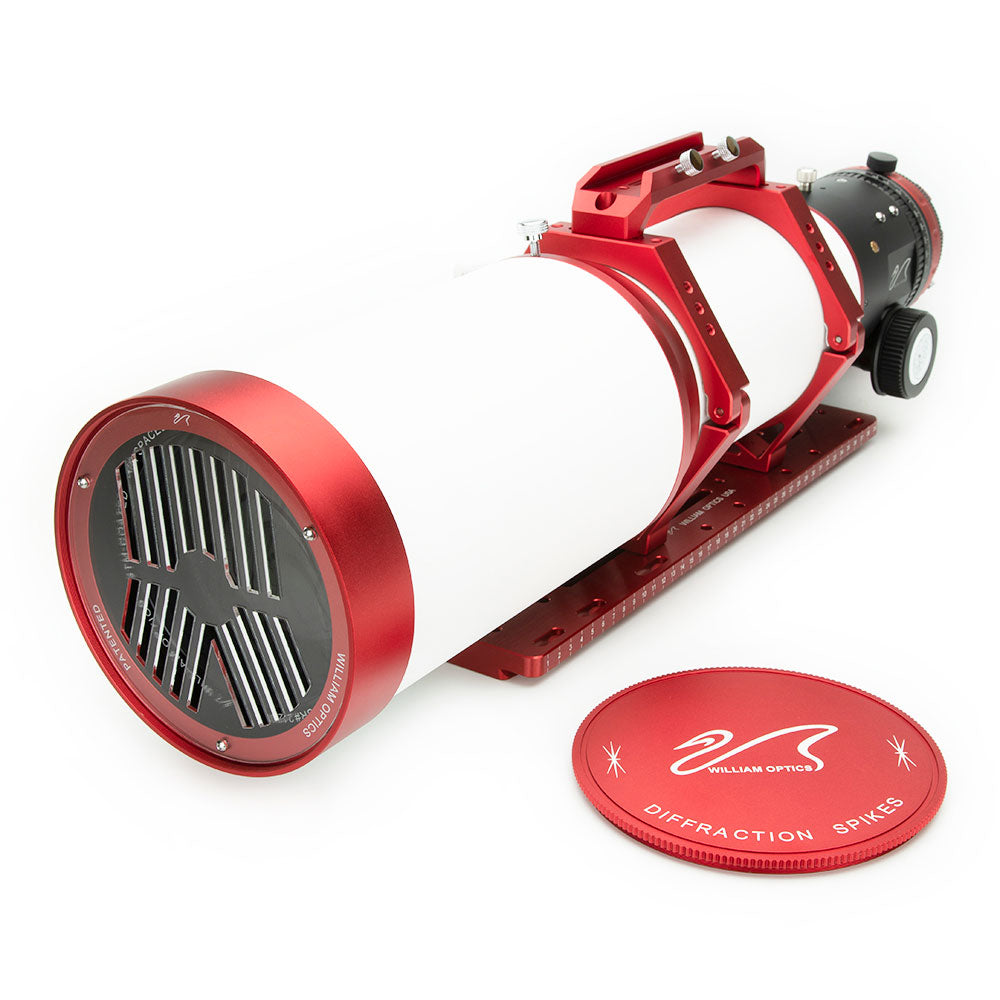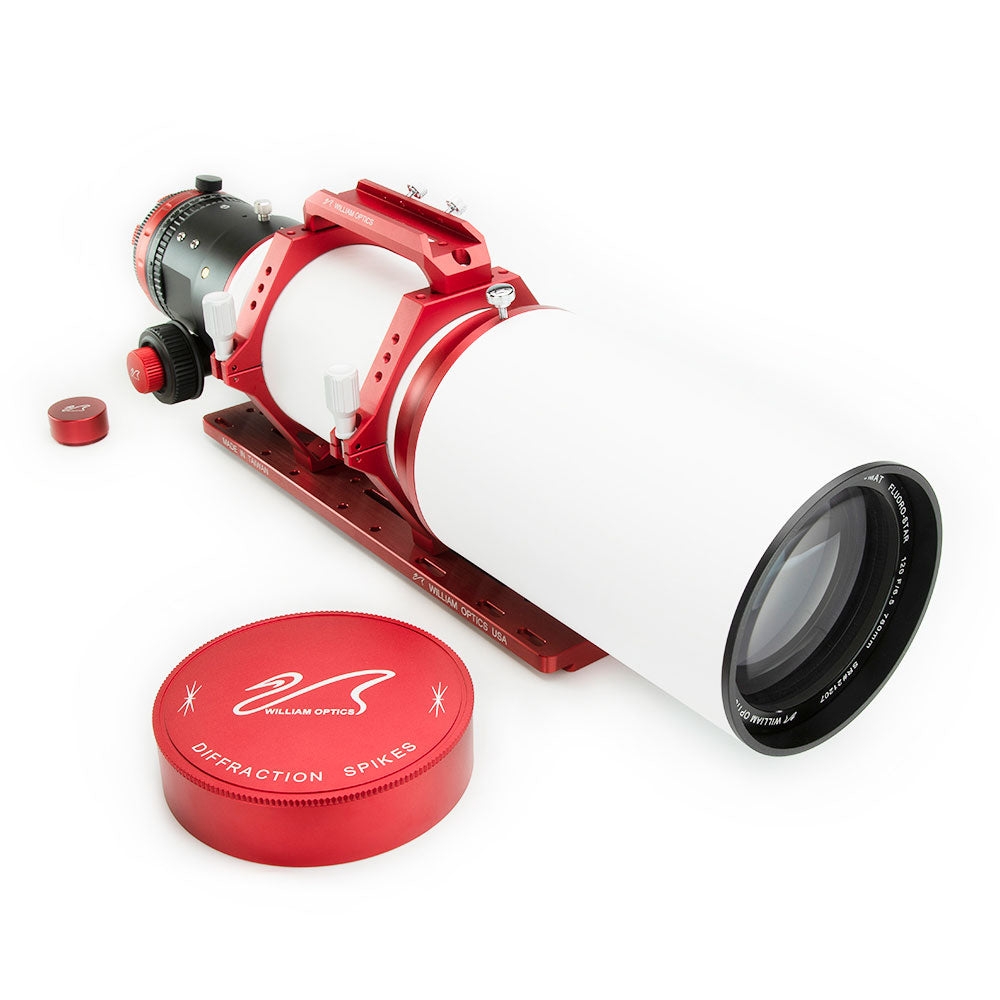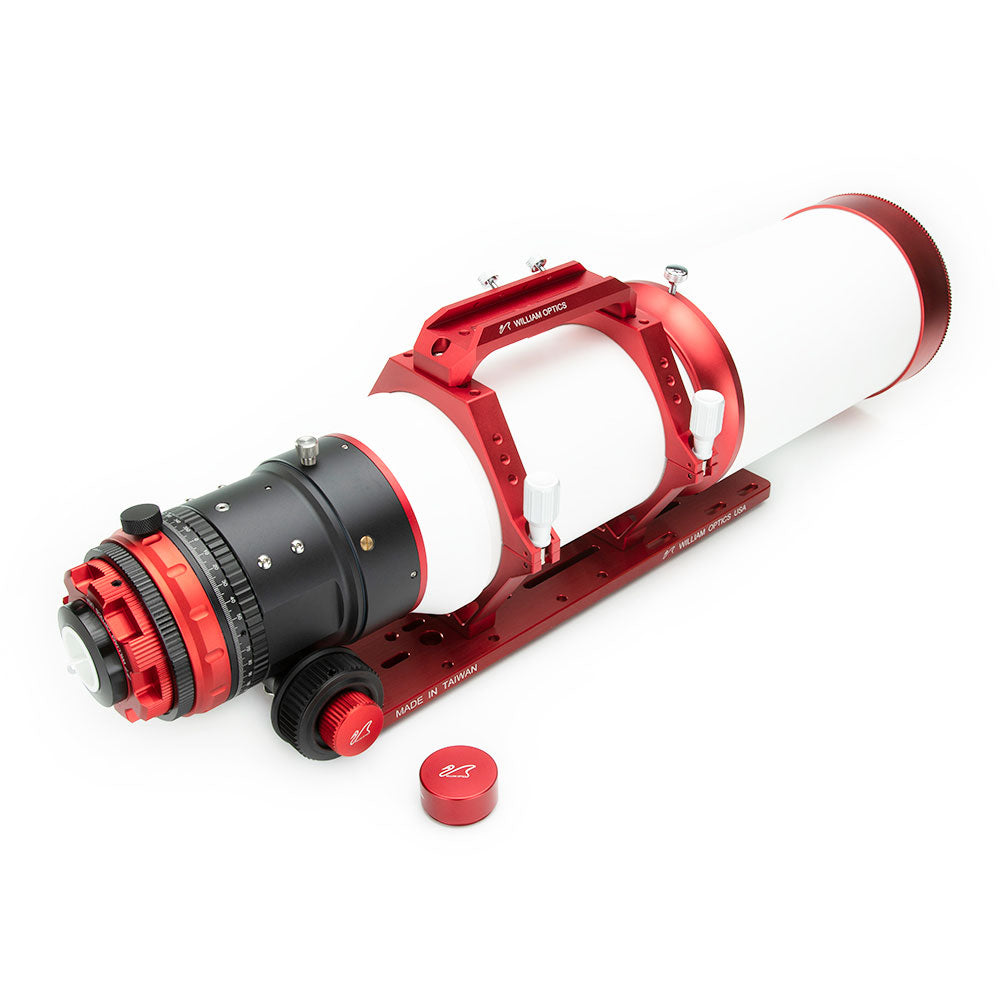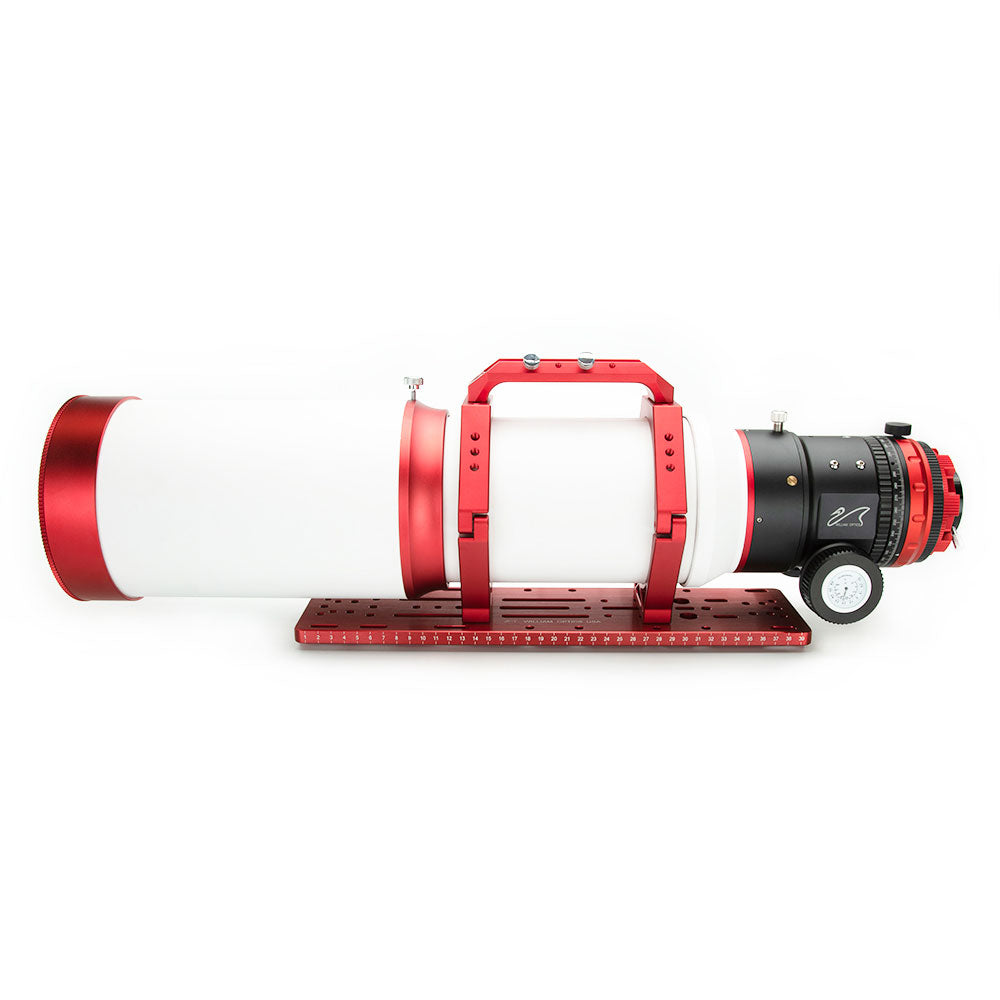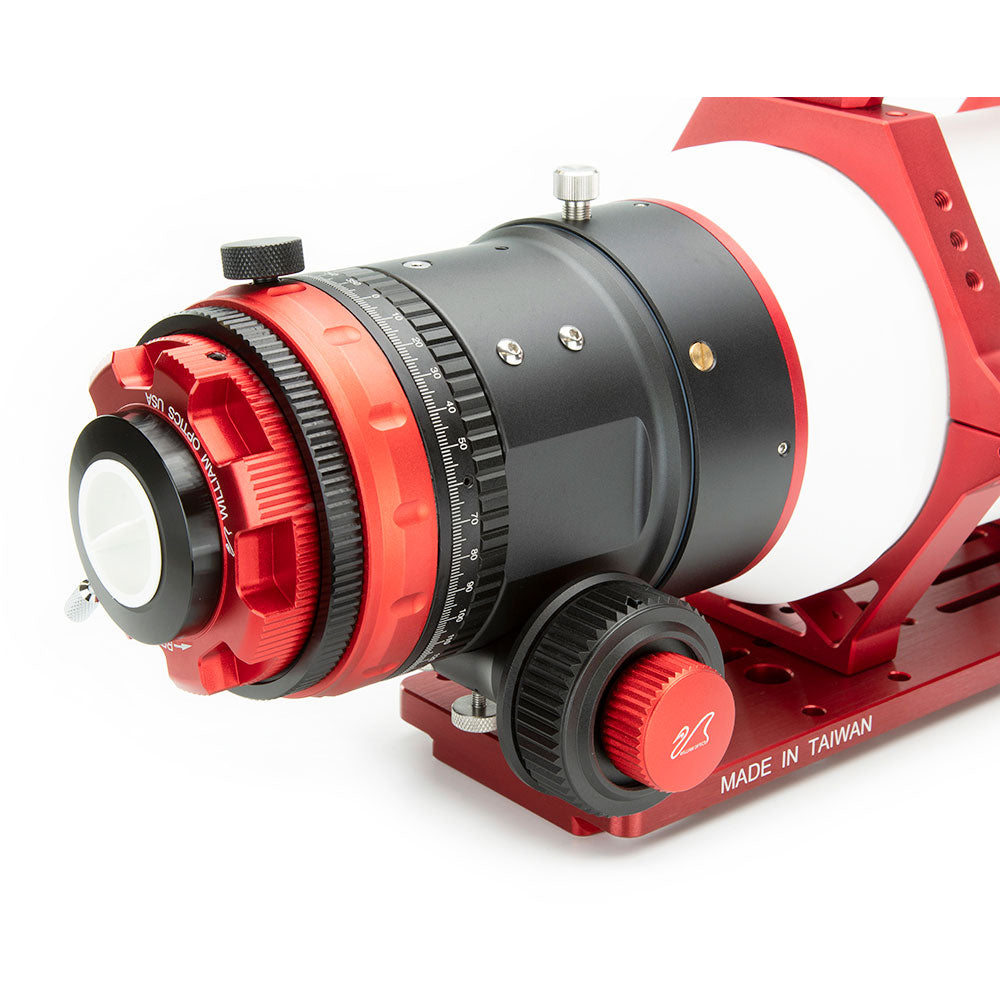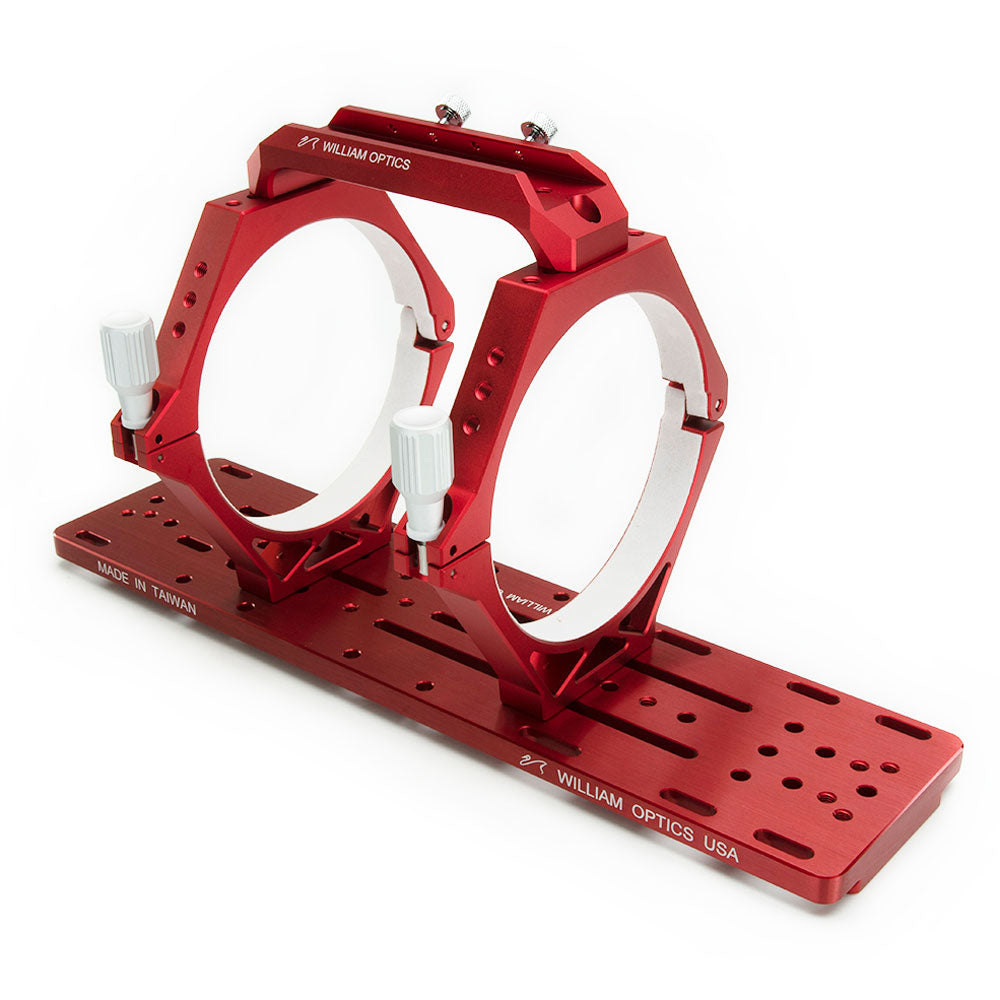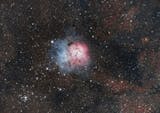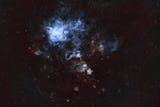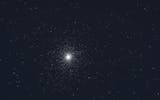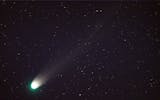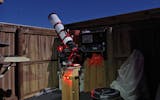FLUOROSTAR 120 F/6.5 APO TRIPLET
FLUOROSTAR 120 F/6.5 APO TRIPLET - Gold / OTA Only is a special order item. Contact us for more info.
The new William Optics Fluorostar FLT 120 is a three element air-spaced apochromatic refractor with a focal ratio of f/6.5 and a focal length of 780mm. Utilizing FPL-53 synthetic fluorite glass with STM coatings, this telescope provides excellent aberration correction and amazing optical performance.
The 3.3" dual speed rack & pinion focuser is smooth, stable and reliable, providing no slippage over long imaging sessions. The super smooth field rotator includes markings for every degree, and a solid thumbscrew position lock.
The CNC-machined and anodized handle bar with finder-style saddle is perfect for attaching a guide scope or other accessories. The FLT 120 also includes William Optics' innovative clear Bahtinov mask integrated into the lens cap. The Rotolock 2 inch adapter provides for a solid and efficient connection for a William Optics 2 inch diagonal, and other accessories.
William Optics uses high quality steel lens cells for their Gran Turismo and FLT triplet refractors. This is perfect for temperature compensation and will prevent pinched optics in cold weather conditions.
For best imaging results, it is recommended to pair the FLT 120 with the Flat68III 1.0x field flattener or Flat7A 0.8x reducer.
Specifications
| Optical design |
Air-spaced apochromatic triplet |
|
Objective diameter |
120 mm |
|
Focal length |
780 mm |
|
Focal ratio |
f/6.5 |
|
Image circle |
44.4 mm (with field flattener) |
|
Compatible flattener |
William Optics Flat68III, Flat7A |
|
Mount attachment |
Losmandy-style dovetail bar |
|
Focuser |
Rack & pinion dual speed 3.3" diameter |
|
Camera connection |
M92 x 1, 2" Rotolock |
|
Backfocus |
65.2 mm (with Flat68III) |
|
Tube weight |
7.2 kg |
|
Tube length |
680 mm (retracted), 850 mm (extended) |
|
Tube diameter |
TBD |
|
Dew shield diameter |
156 mm |
|
SKU |
WO-A-F120GD-RP33 (Gold), WO-A-F120RD-RP33 (Red) |
Included items
- Fluorostar 120
- Lens cap with Bahtinov mask
- Finder saddle handle bar
- Losmandy-style dovetail bar
- Soft carry case
Instructions
Note: Once you have unscrewed the rear adapter to the appropriate value in the table below, the remaining backfocus distance to make up will be 55mm from the rear M48 thread.
Distance adjustment needed for correct backfocus with Flat6AIII 0.8x reducer
| FLT91 | 5.4 mm |
|---|---|
| FLT120 | 10.7 mm |




-
Optical design
-
Aperture
-
Focal length
-
Focal ratio
-
Image circle
-
Backfocus65.2 mm with Flat68III
-
Focuser type
-
Dew shield diameter
-
Weight

